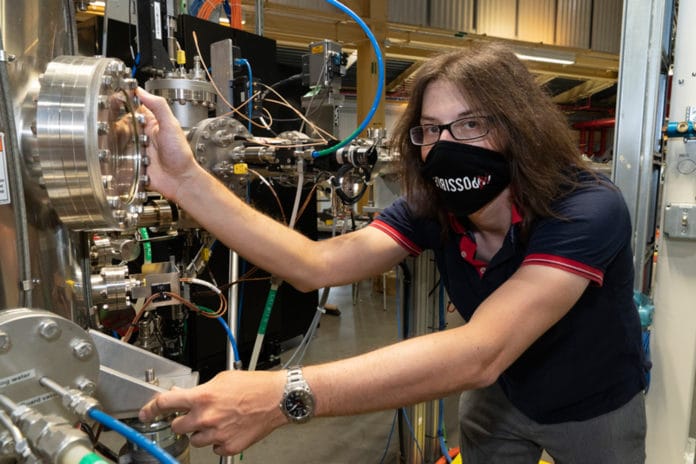The world’s thinnest superconductor exhibits unusual electronic behavior. The superconductor, which is just an atomic layer thick, has several applications as it conducts electricity exceptionally efficiently.
It can superconducting at 65 K. In contrast, bulk samples of the same material superconduct at a much lower temperature (8 K).
In new work, MIT scientists offered the first experimental evidence of spin excitations in this superconductor.
Until now, physicists assume that it is impossible to quantify spin excitations in material only an atomic layer thick. In this new work, scientists did not only detect spin excitations but, among other things, also showed that the spin dynamics in the ultra-thin sample were dramatically different from those in the bulk sample. They found that the energy of fluctuating spins in the ultra-thin sample was much higher than the energy of the spins in the bulk sample.
Jonathan Pelliciari, a former MIT postdoc, said, “This is the first experimental evidence of the presence of spin excitations in an atomically thin material.”
Usually, neutron scattering is used to study magnetism. Since spin is the principal property of magnetism, neutron scattering would give off an impression of being a decent test. However, the technique doesn’t work on a material that is only one atomic layer thick.
Hence, scientists used a new experimental technique called resonant inelastic X-ray scattering (RIXS).
Riccardo Comin, the Class of 1947 Career Development Assistant Professor of Physics at MIT, said, “I was initially skeptical. I thought, ‘Yes, it would be great if we could do this, but experimentally it’s going to be next-to-impossible. I thought it was a true moonshot. As a result, “when we collected the very first results, it was mind-blowing for me. I’d kept my expectations low, so when I saw the data, I jumped on my chair.”
Thorsten Schmitt, head of the Spectroscopy of Novel Materials Group at the Paul Scherrer Institut in Switzerland, said, “The impact of this work is two-fold. On the experimental side, it is an impressive demonstration of the sensitivity of RIXS to the spin excitations in a superconducting material only an atomic layer thick. Furthermore, the [resulting data] is expected to contribute to understanding the enhancement of the superconducting transition temperature in such thin superconductors. In other words, the work could lead to even better superconductors.”
Valentina Bisogni, lead scientist for the Beamline SIX who was not involved in this study, says, “the understanding of unconventional superconductivity is one of the main challenges faced by scientists today. The recent discovery of high-temperature superconductivity in a monolayer-thin film of iron selenide renewed the interest in the iron selenide system. It provides a new route to investigate the mechanisms enabling high-temperature superconductivity. In this context, the work of Pelliciari et al. presents an enlightening, comparative study of bulk iron selenide and monolayer-thin iron selenide, revealing a dramatic reconfiguration of the spin excitations.”
Journal Reference:
- Pelliciari, J., Karakuzu, S., Song, Q. et al. Evolution of spin excitations from bulk to monolayer FeSe. Nat Commun 12, 3122 (2021). DOI: 10.1038/s41467-021-23317-3
